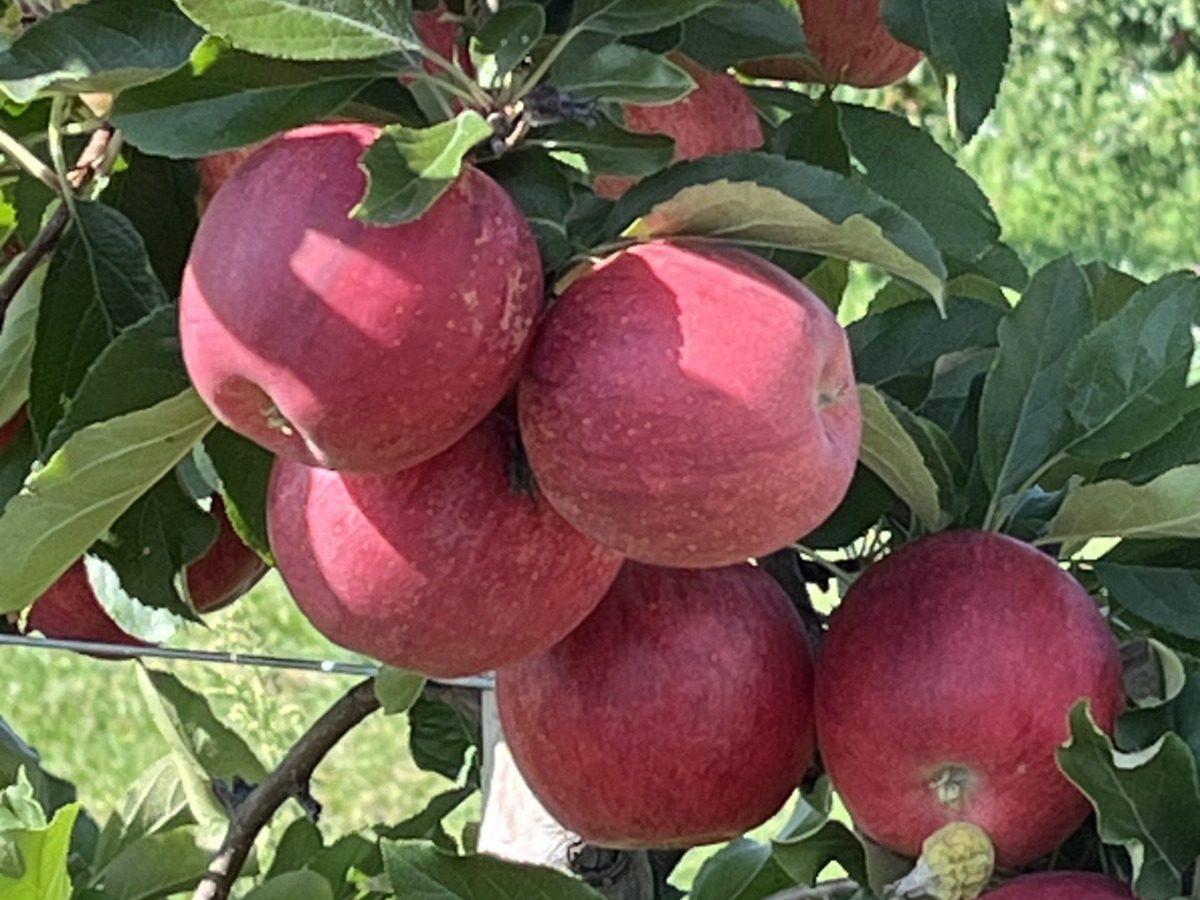
Photos by Colleen Kottke/Wisconsin State Farmer via Reuters Connect
As the leaves begin changing colors, business at most apple orchards across the state is already in full swing.
According to the Wisconsin Apple Growers Association (WAGA), the state grows more than 300 varieties of apples, including many traditional and heirloom types, alongside new cultivars like Honeycrisp.
While many of the first apples of the season may already be gone, cooler weather ushers in plenty of later apple varieties, including Paula Red, McIntosh, Sweet 16, Cortland, Gala and Honeycrisp. Varieties ripening in October are Northwest Greening, Crimson Crisp, Spartan, Empire, Haralson, Honeygold, Red Delicious, Regent, Fireside/Connell Red, SnowSweet, Fuji, Jonagold, Jonathan, Pazazz, Smitten, Golden Delicious, Ida Red and Evercrisp.
Apple lovers are eager to stock up on their favorite varieties for baking, making fresh or canned applesauce, cider or even just eating fresh. But with so many choices, which apple is the best choice for your favorite recipe? Here are some tips from apple orchard owners to help select that perfect combination of apples.
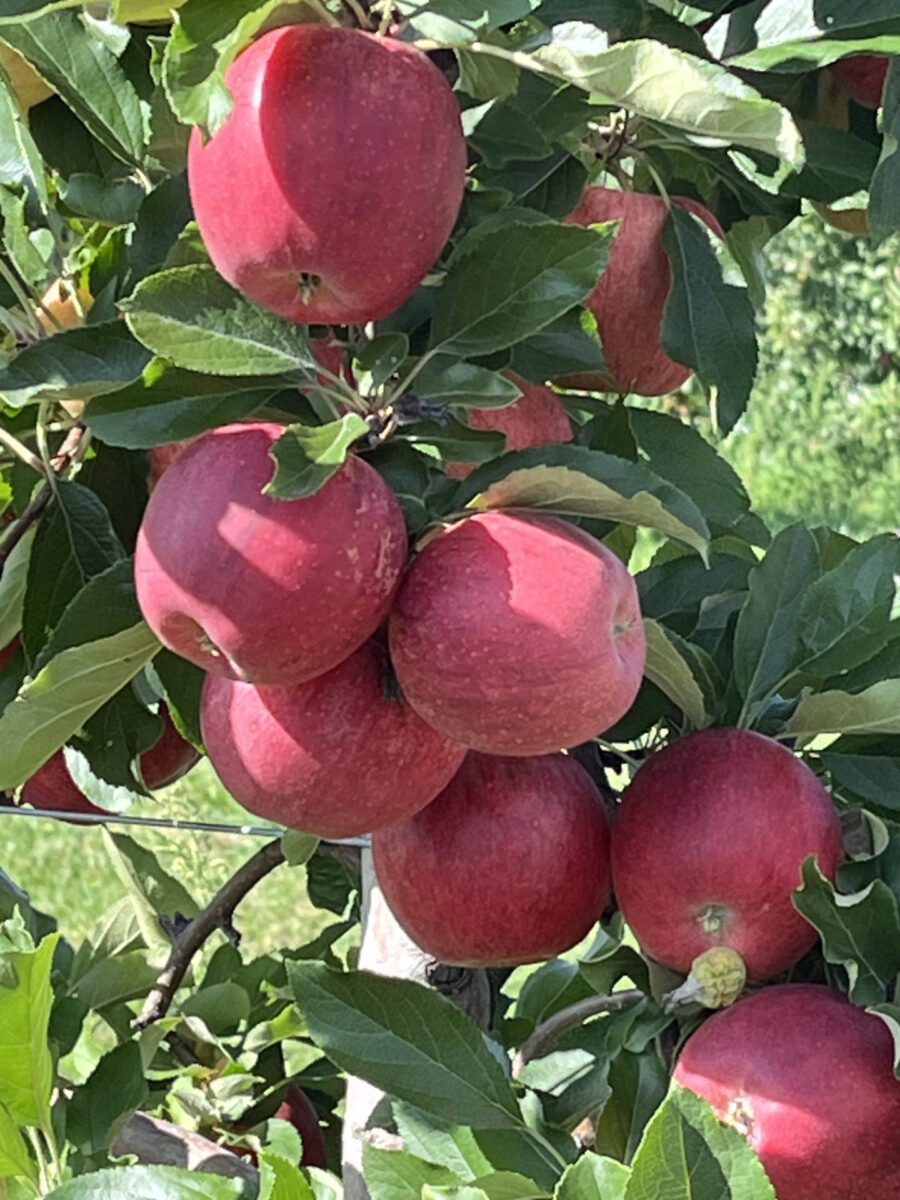
Apple lovers are eager to stock up on their favorite varieties for baking, making fresh or canned applesauce, cider or eating fresh. But with so many choices, which apple is the best choice for that favorite recipe? Photos by Colleen Kottke/Wisconsin State Farmer via Reuters Connect
These apples are multi-taskers in the kitchen
Bill Zeleske grows several varieties of apples on his Fond du Lac operation, Fondy Fruits and More. Over the years he has tested several varieties and has found some outstanding ones. His newest favorite is the Bonnie Best apple cultivar that he obtained from Jung, a nursery based in Randolph.
“It’s really a nice, big apple that holds up well for pie-making,” Zeleske said.
According to Jung’s catalog, the late Bonnie Keehn discovered this tree on her property in Cooksville, an unincorporated community in Rock County. She introduced it to Jung in the late 1980s by bringing samples of the fruit and one of her prize-winning pies. While the parentage of the apple is unknown, the cream-colored flesh is crunchy, tender, juicy and slightly tart — perfect for pies, canning and fresh use.
Zeleske says the fruit ripens in early October and keeps well.
Many growers and bakers are fans of the Honeycrisp apple, introduced by the University of Minnesota. The flesh is cream-colored and crunchy and has a full body of tart and sweet flavors, great for both eating and baking.
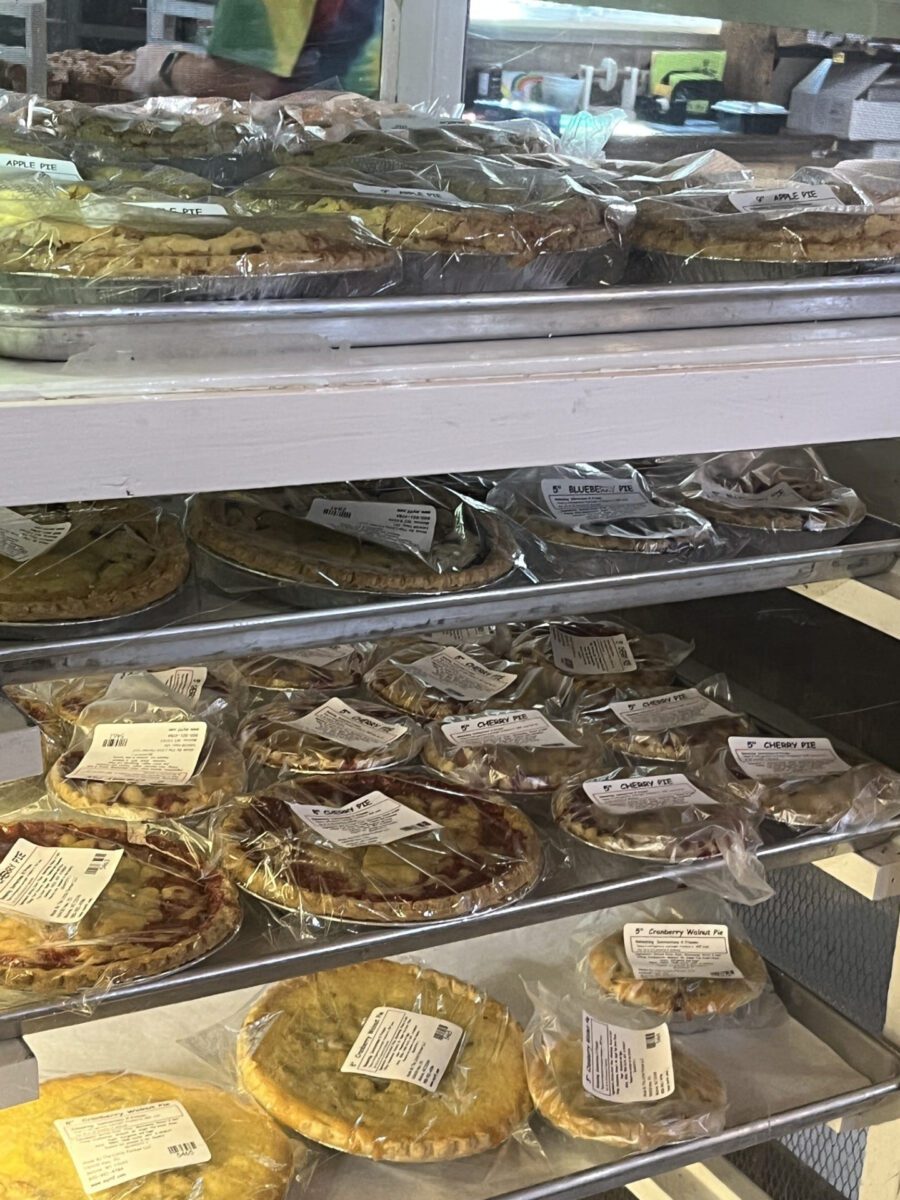
The Little Farmer apple orchard in Malone, Wisconsin, is known for its apple pies that are baked fresh daily. Each season, they sell over 10,000 pies. Photos by Colleen Kottke/Wisconsin State Farmer via Reuters Connect
Making the perfect apple pie
Many pie-makers swear by recipes using one variety of apple, while others prefer a combination of two so they can balance the signature apple flavor of one variety with another that offers a great texture when baked.
Besides fresh apples, The Little Farmer apple orchard in Malone is known for its apple pies, baked fresh daily. Each season, they sell over 10,000 pies. Buyers may notice a difference in taste from the pie they purchased in late August to the one they brought home in October, said co-manager Jen Bergen.
“We have over 20 varieties that ripen between August and October and we typically choose two varieties that are ripe at the time. We usually mix apples that hold their shape with those that soften a bit more,” she said. “For a nice balance, we blend a sweeter apple with one that’s a little more tart.”
For over 25 years, the volunteers at United Methodist Church in Fond du Lac have been using a combination of Cortland and McIntosh apples for their annual apple pie festival/sale. The combination has proved to be a success, with the church selling over 20,000 pies to the public.
“We’ve been using that recipe since day one, as the Cortland apples stay firm and the McIntosh cooks down. The flavors meld together to make a nice, tasty apple pie,” said Karen Kalsbeek, one of the organizers of the fundraiser.
Other varieties recommended for apple pies, crisps and cobblers include Jonagold, Ida Red, Granny Smith and Crispin (also known as Mutsu).

Those putting up dozens of quarts of applesauce may choose to blend several combinations of apples, depending on what happens to be in season. Photos by Colleen Kottke/Wisconsin State Farmer via Reuters Connect
Finding the right combination for homemade applesauce and cider
There are many combinations of sweet and tart apple varieties that make good applesauce and cider. Many canners and those who press their own cider prefer to experiment with a combination of flavors.
“I like to use some spritely tart apples like Zestar!, McIntosh and Cortlands and mix them with the milder varieties like Blondees, Honeygolds and Mutsus to make cider,” Zeleske said. “It makes a nice blend of flavors.”
Those putting up dozens of quarts of applesauce may choose to blend several combinations of apples, depending on what is in season. For many cooks, McIntosh is a nice, tart apple that offsets the sweetness of added sugar and cooks down quickly, speeding up the canning process.
Others opt for a combination of sweet and tart varieties such as Fuji or Honeycrisp for sweetness and McIntosh and Granny Smith for tartness for a balanced flavor and texture. If you’re looking for super smooth applesauce, Golden Delicious, Galas, Duchess and McIntosh are good choices. Be careful — Golden Delicious apples bruise easily. Those who prefer a chunkier sauce may prefer to use firmer apples such as Rome and Ida Red.
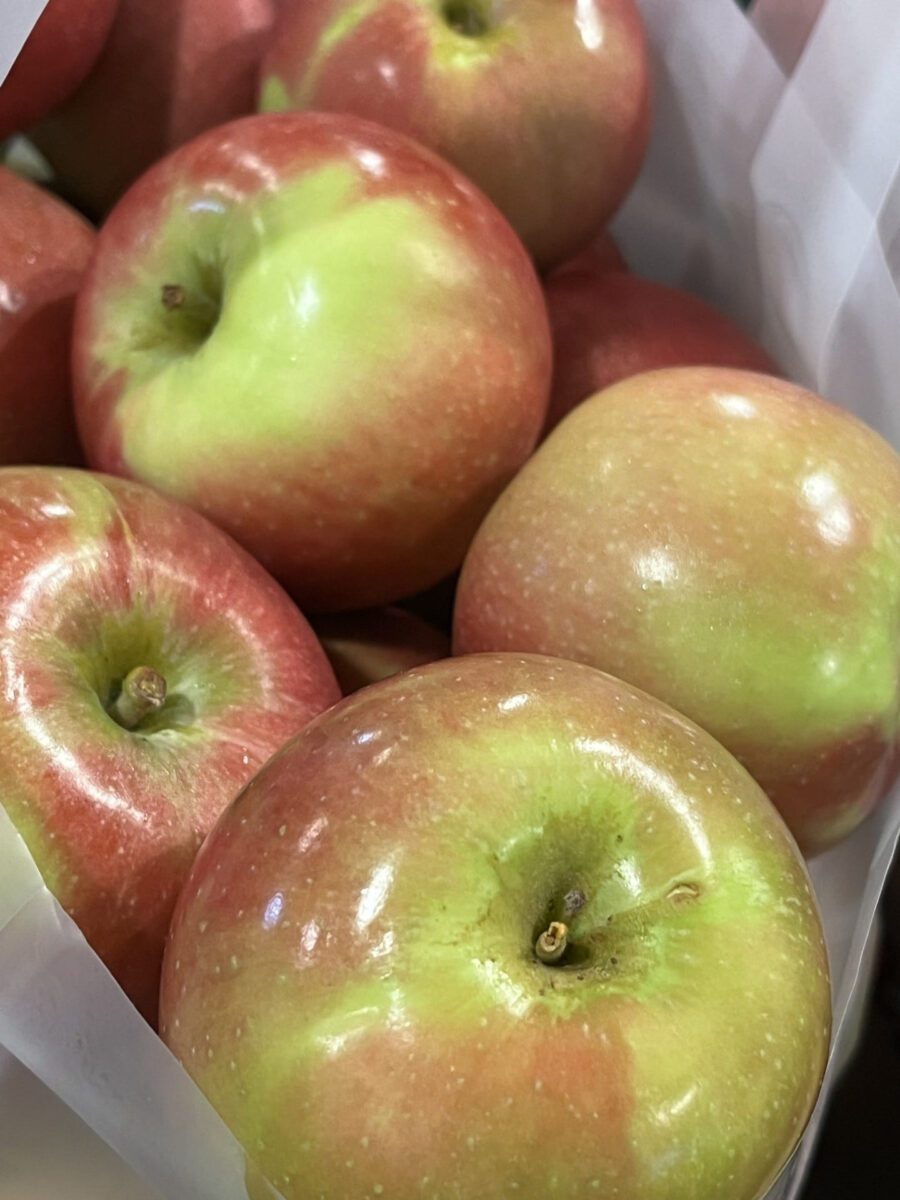
Bred at the University of Minnesota, SnowSweet apple’s snowy white flesh is very slow to oxidize and turn brown after cutting. The apple can be sliced for snacking or cut for salads well in advance. Photos by Colleen Kottke/Wisconsin State Farmer via Reuters Connect
Try these apples to complement your charcuterie board and salads
Traditionally made up of cured meats, cheeses, crackers, and of course, plenty of apples, charcuterie boards can be customized to fit any taste or occasion.
For a board featuring Wisconsin dairy, thinly sliced apples are an excellent pairing due to their range of sweet and tart flavors that complement different cheeses. Dairy Farmers of Wisconsin recommends a crisp sweet-tart apple like Honeycrisp or a mildly sweet Gala to balance sharp cheddar’s robust, tangy flavor. Sweet and crisp apple varieties like Golden Delicious and Granny Smith work well to balance the pungent flavor of blue cheese.
For apples that brown slowly on a charcuterie board or in your salad, choose varieties like Cosmic Crisp, Pink Lady, Empire, Ambrosia, RubyFrost, EverCrisp, Honeycrisp or Arctic.
To further prevent browning, toss apple slices in fresh lemon juice to create a barrier against air exposure, or soak apple slices for a few minutes in a lemon-lime soda, then pat them dry before adding to your board or salad.
How to choose and preserve the best apples for your recipes
When browsing through a farmers market, farm store or apple orchard, a good rule of thumb for calculating the quantity of apples needed is as follows: six to eight large-sized apples make a 9-inch pie, while 4 pounds of apples produce approximately 4 cups of applesauce.
Apple picking in the cool of the morning is a good practice because the apples are chilled overnight, which helps them keep their firmness longer. Look for apples with shiny skin — they will be crisper and tastier than dull apples. They should feel firm when you give them a gentle squeeze, and not have any bruises or punctures.
Once home, sort apples to remove any that are damaged; especially bruised apples. Use larger apples first since the smaller ones tend to keep longer.
Appleland of Fredonia shares the following tips for storing apples:
- Refrigerate apples at about 32°F/0°C if daytime temperatures are still warm. If storing apples in a refrigerator, put them in polythene bags; 5-10 to a bag, and make a few air holes, which helps with air circulation and counteracts the dry air found in a refrigerator.
- Store the apples in a frost-free shed or garage once daytime temperatures fall to just above freezing. The storage location must be cold, but frost-free. If the apples freeze, they will become unusable.
- Place apples on trays in traditional wooden boxes, seed trays or cardboard boxes. Good air circulation and humidity are the most important things for successful storage. Try a mix of storage materials (including keeping some apples in polythene bags), as some methods may work better than others in your situation.
- This article originally appeared on Wisconsin State Farmer: Evercrisp, Empire, Fuji, oh my! Here’s what Wisconsin apple growers say is best for pie, cider, applesauce
Reporting by Colleen Kottke, Wisconsin State Farmer / Wisconsin State Farmer
USA TODAY Network via Reuters Connect
Related: 5 great orchards to go apple picking in Wisconsin

12 gluten-free restaurants in Wisconsin that locals love
Looking for a delicious and safe gluten-free dining experience? Visit any of these gluten-free restaurants, bakeries, or cafes in Wisconsin! There...

9 classic roadside diners in Wisconsin that are worth a detour
At some classic roadside diners in Wisconsin, history is served up alongside breakfast and lunch. You don’t have to look hard to find some of the...
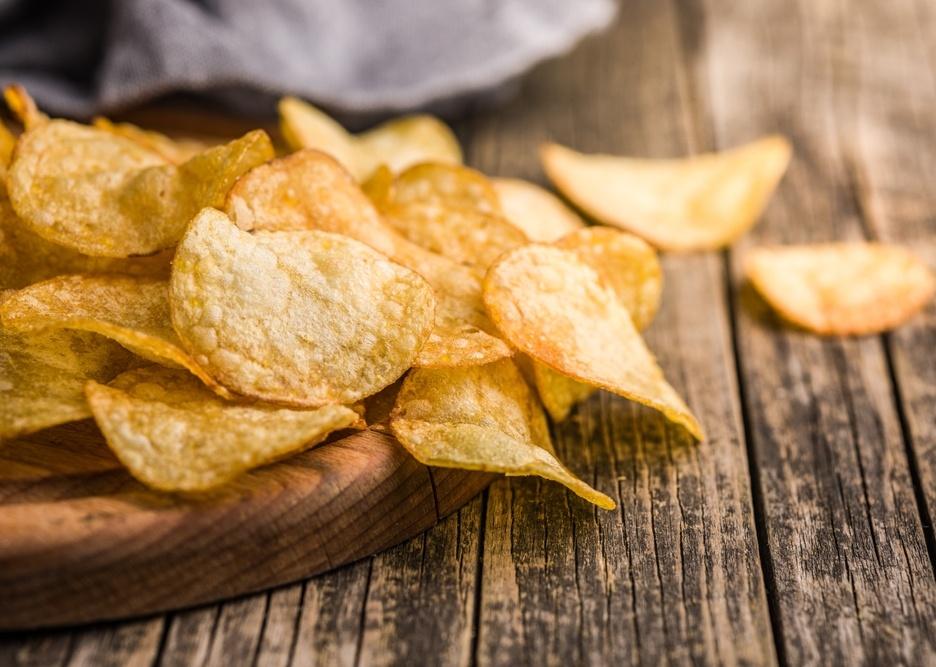
Top 5 uniquely popular potato chip brands in Wisconsin
Instacart recently dug into purchase data from 2024 to compile the top 5 uniquely popular potato chip brands in Wisconsin. Chips are more than just...

The 11 best things to eat at AmFam Field this season
With new food vendors and fun menu items, AmFam Field is a hot spot for dining. Apologies to these true concession classics, but move over hot dogs,...




